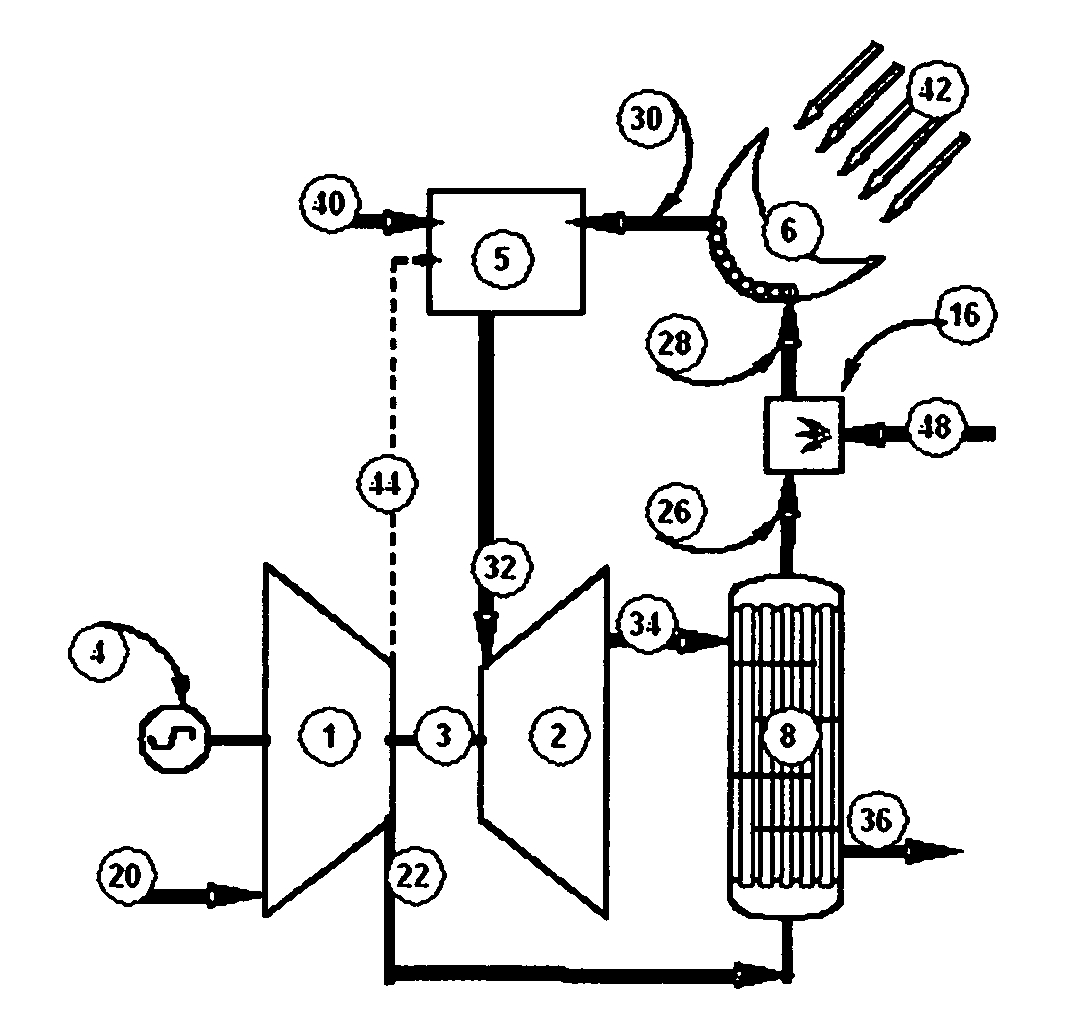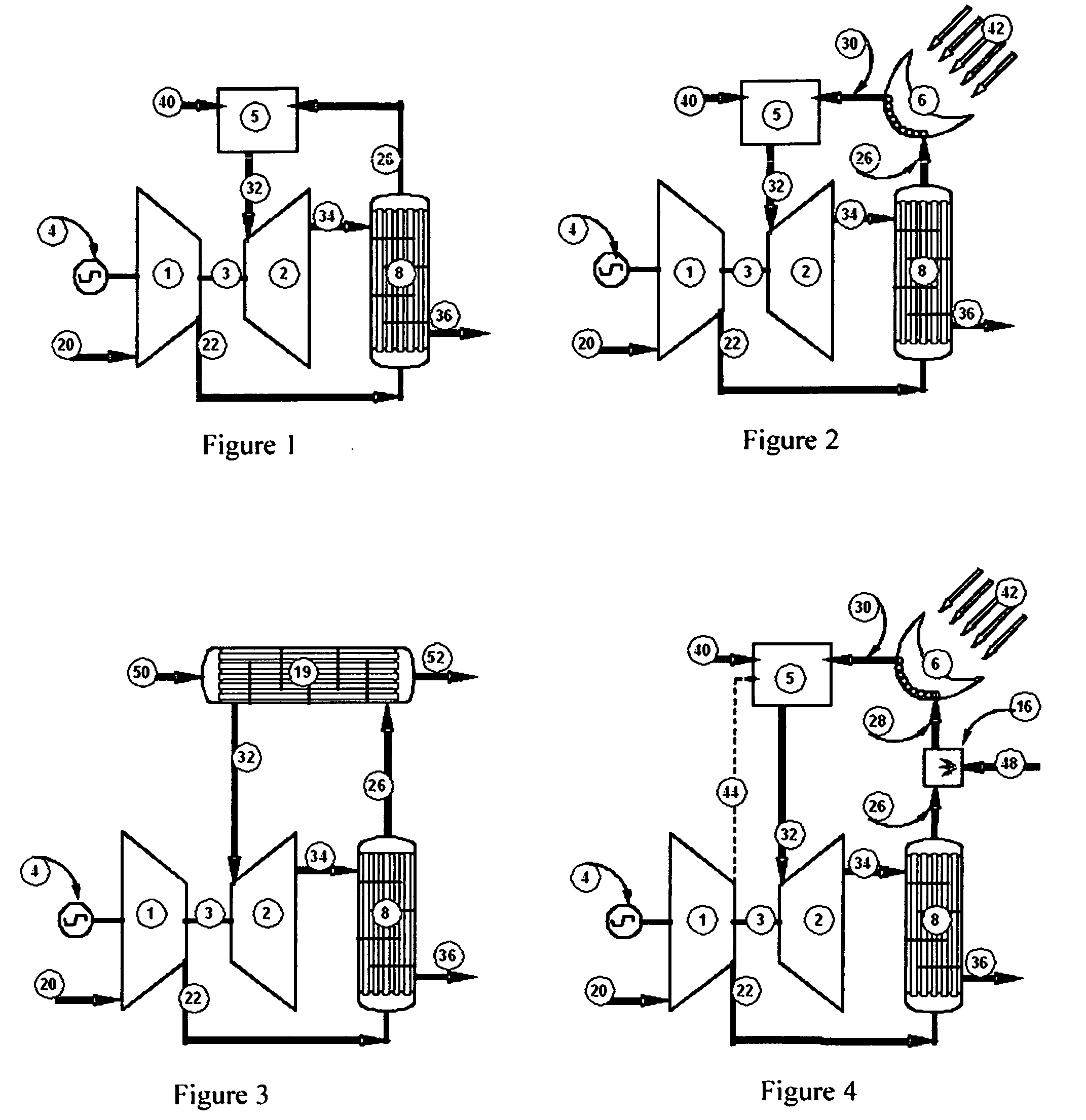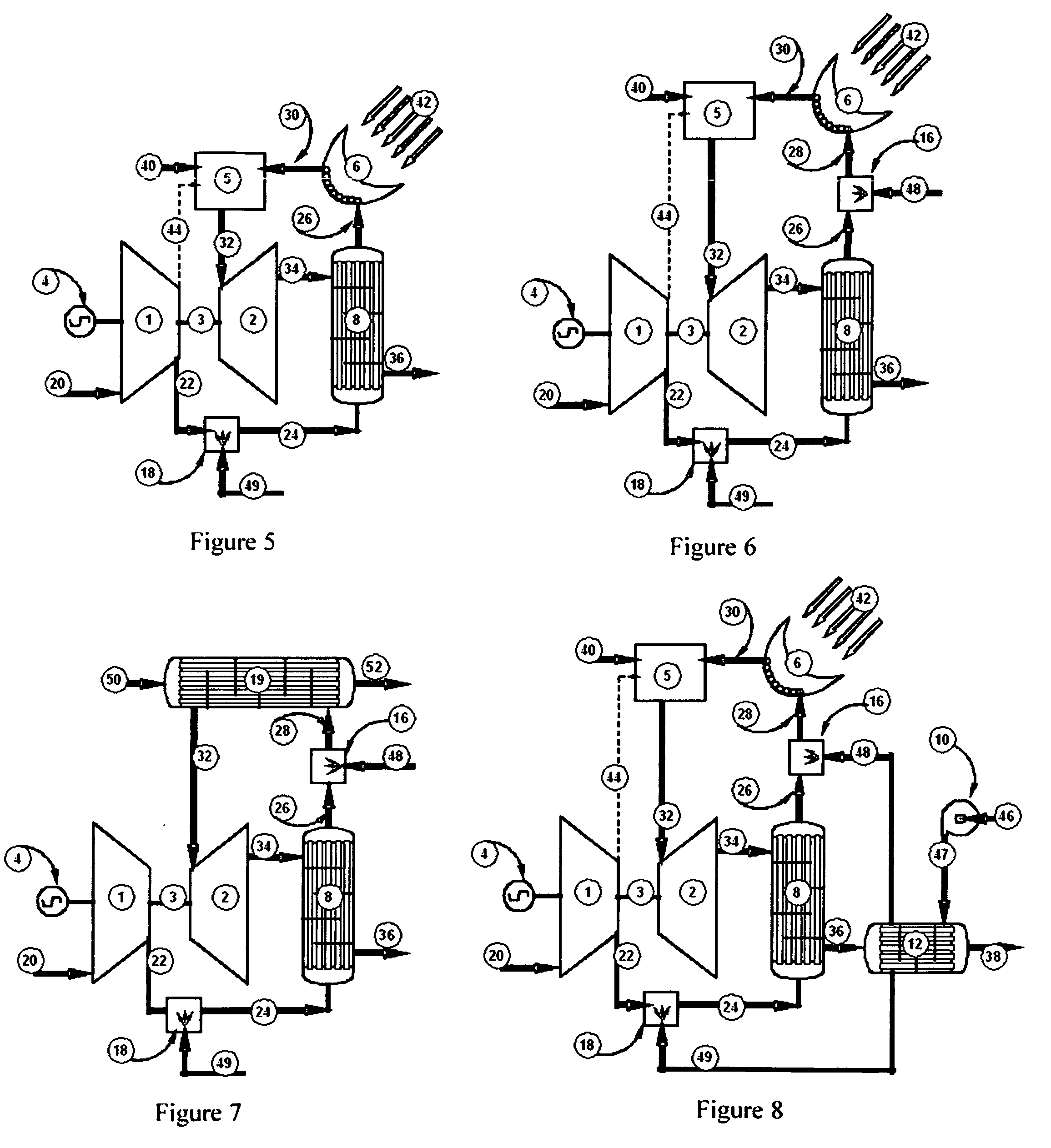Method and apparatus for generating electricity
a technology of electricity generation and apparatus, applied in the direction of electric apparatus, hot gas positive displacement engine plants, climate sustainability, etc., can solve the problems of limiting the usefulness of microturbines for applications, reducing efficiency rapidly, and difficult to design and maintain the maximum energy input through solar collectors, etc., to increase the mass of high-pressure working fluid, increase the temperature and enthalpy of working fluid, and reduce the effect of temperatur
- Summary
- Abstract
- Description
- Claims
- Application Information
AI Technical Summary
Benefits of technology
Problems solved by technology
Method used
Image
Examples
Embodiment Construction
[0040]Thermodynamic analysis of the microturbine shown in FIG. 1 is substantially equal to the thermodynamic analysis of the solar microturbine shown in FIG. 2 which reveals a maximum overall efficiency of 26% and a turndown characteristic shown in FIG. 11. Extension of this graph indicates that a 35% reduction of input energy would reduce the output power to zero. Characteristics of the solar microturbine shown in FIG. 2 will serve as the baseline of comparison for hybrid Brayton modifications taught by this patent disclosure. The following discussions made in comparison to the solar microturbine shown in FIG. 2 will apply equally to effects on the microturbine shown in FIG. 1. Discussions of effects of the hybrid Brayton modifications on the externally heated microturbine shown in FIG. 3 will highlight the implication of the temperature dependent nature of heat transfer in the external heater.
[0041]The hybrid Brayton modification shown in FIG. 4 includes adding water (48) into cha...
PUM
 Login to View More
Login to View More Abstract
Description
Claims
Application Information
 Login to View More
Login to View More - R&D
- Intellectual Property
- Life Sciences
- Materials
- Tech Scout
- Unparalleled Data Quality
- Higher Quality Content
- 60% Fewer Hallucinations
Browse by: Latest US Patents, China's latest patents, Technical Efficacy Thesaurus, Application Domain, Technology Topic, Popular Technical Reports.
© 2025 PatSnap. All rights reserved.Legal|Privacy policy|Modern Slavery Act Transparency Statement|Sitemap|About US| Contact US: help@patsnap.com



